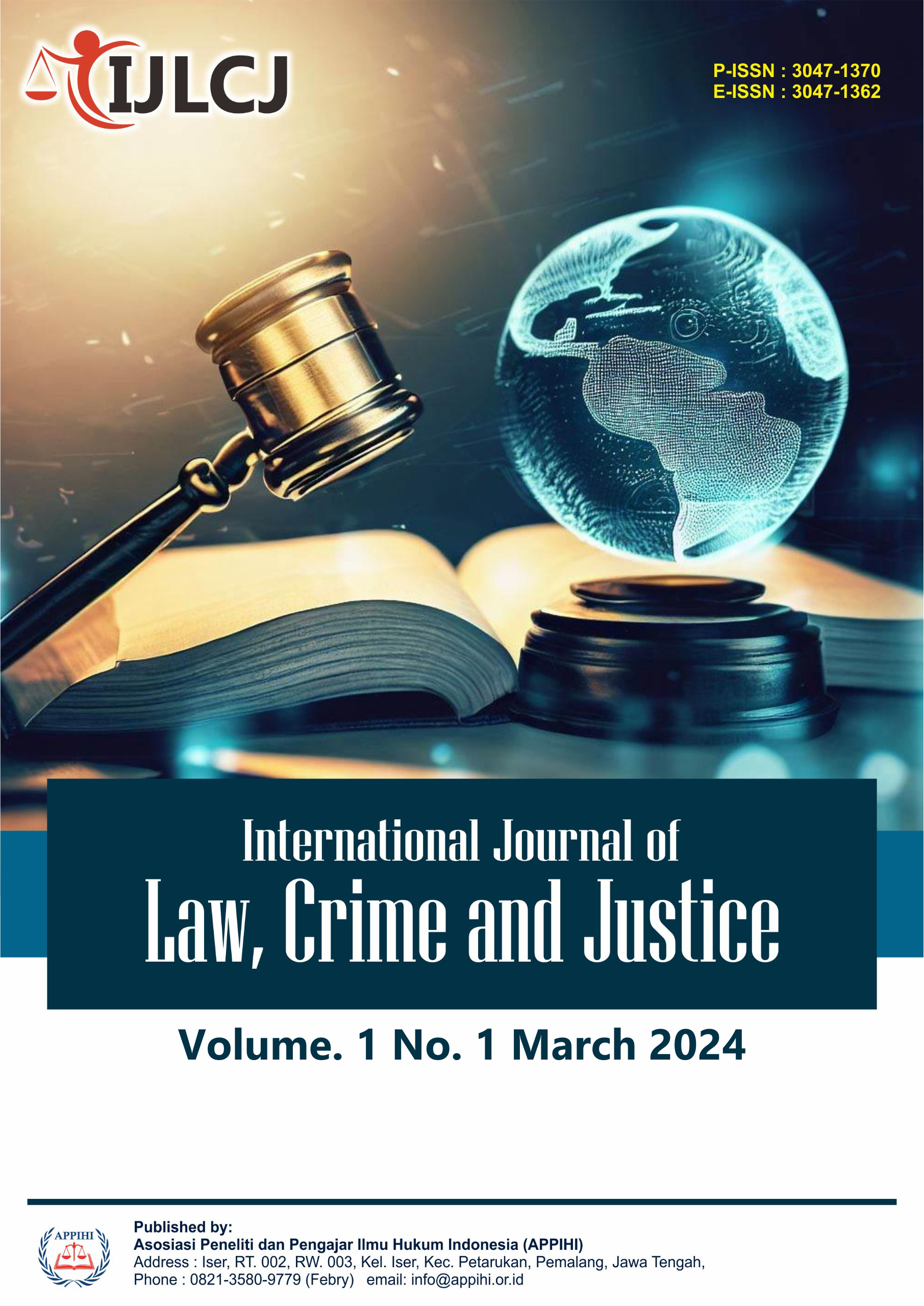Restorative Justice in Criminal Law: Assessing Its Role in Reducing Recidivism Rates
DOI:
https://doi.org/10.62951/ijlcj.v1i1.250Keywords:
Restorative justice, Criminal law, Recidivism, Offender rehabilitation, Victim satisfactionAbstract
This study evaluates the effectiveness of restorative justice approaches in reducing recidivism among offenders. By examining case studies and statistical data from restorative programs across various countries, the article assesses the impact of restorative justice on offender rehabilitation, victim satisfaction, and community healing. Findings suggest that while restorative justice can significantly reduce re-offense rates for certain crimes, its success depends on structured implementation and societal support for alternative justice methods. This paper highlights the potential of restorative justice to address the root causes of crime, fostering positive outcomes for offenders, victims, and communities.
Downloads
References
Bazemore, G., & Umbreit, M. (2001). A balanced approach to restorative justice. Criminal Justice Press.
Braithwaite, J. (2002). Restorative justice and responsive regulation. Oxford University Press.
Daly, K. (2006). Restorative justice and sexual assault: An archival study of court and conference cases. The British Journal of Criminology, 46(2), 334–356. https://doi.org/10.1093/bjc/azl001
Gavrielides, T. (2007). Restorative justice theory and practice: Addressing the discrepancy. European Institute for Crime Prevention and Control.
Johnstone, G., & Van Ness, D. W. (2013). Handbook of restorative justice. Routledge.
Latimer, J., Dowden, C., & Muise, D. (2005). The effectiveness of restorative justice practices: A meta-analysis. The Prison Journal, 85(2), 127–144. https://doi.org/10.1177/0032885505276962
McCold, P., & Wachtel, B. (2002). Restorative justice theory validation. Restorative Justice, 3(1), 111–140.
Nugent, W., Williams, M., & Umbreit, M. S. (2004). Participation in victim–offender mediation and reoffense: Successful replications?. Research on Social Work Practice, 14(2), 137–147. https://doi.org/10.1177/1049731503255823
Rodogno, R. (2008). Rehabilitation and the moral duty to apologize. Journal of Applied Philosophy, 25(4), 273–290. https://doi.org/10.1111/j.1468-5930.2008.00406.x
Rossner, M. (2013). Just emotions: Rituals of restorative justice. Oxford University Press.
Sherman, L. W., & Strang, H. (2007). Restorative justice: The evidence. Smith Institute.
Strang, H., & Braithwaite, J. (2001). Restorative justice and civil society. Cambridge University Press.
Tullis, P. (2013, March 3). Can forgiveness play a role in criminal justice? New York Times. https://www.nytimes.com/2013/03/03/opinion/sunday/can-forgiveness-play-a-role-in-criminal-justice.html
Zehr, H. (2002). The little book of restorative justice. Good Books.
Zernova, M. (2007). Restorative justice: Ideals and realities. Ashgate Publishing.
Downloads
Published
How to Cite
Issue
Section
License
Copyright (c) 2024 International Journal of Law, Crime and Justice

This work is licensed under a Creative Commons Attribution-ShareAlike 4.0 International License.





